Special Report
20 "Italian" Dishes Italians Don't Really Eat

Published:
Last Updated:

More than 17 million Americans can claim Italian descent. The majority of them have origins in southern Italy, and they settled mostly in the Northeast, California, Florida, Louisiana, Ohio, and Illinois. It would be hard to find a corner of America, though, where you wouldn’t encounter locals with Italian names — or, more to the point, be able to eat some version of Italian-American cuisine.
The cooking of our various Italian-America communities, over the decades, has evolved into a real cuisine, heavily inspired by the old country but playing by its own rules. Unpretentious, generous in proportion, vividly flavored, and almost always irresistible, what we have come to think of as simply “Italian” food is an essential part of the American culinary landscape.
But our Italian food isn’t necessarily what we’ll find if we visit Italy itself. Heavy sauces packed with numerous ingredients and overabundant servings of meat and an excess of cheese are the exception there, and some food names don’t mean the same thing there that they do to us.
In this era of cheap air travel and social media, ideas travel quickly, about food along with everything else. It’s hard to say definitively, then, that you won’t find Italian-American or other not-quite-Italian dishes in Italy today, because these days, more and more, you can find anything anywhere. But here are 20 dishes that Italians — while they may have encountered them occasionally, and even taken a bite or two — don’t really eat.
Click here to see the 20 “Italian” dishes Italians don’t really eat.
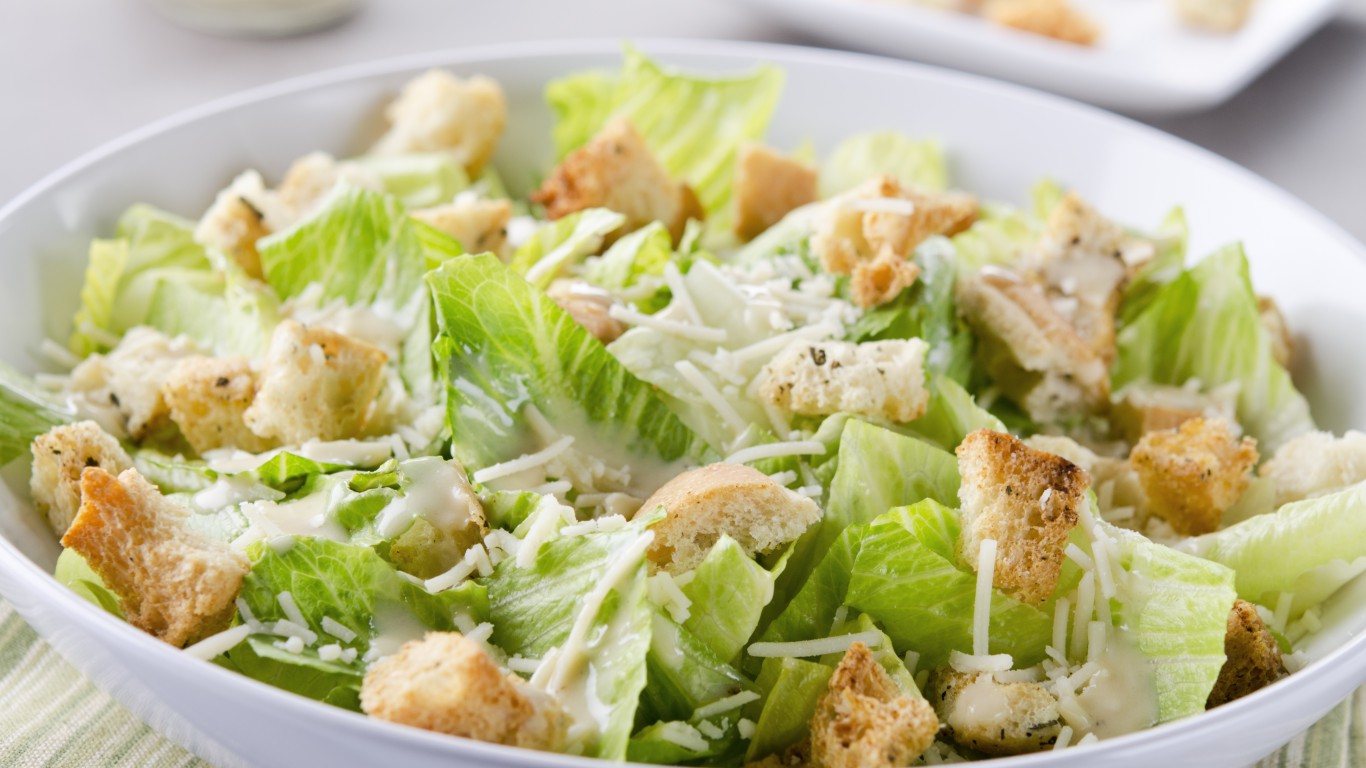
1. Caesar salad
One of the world’s most popular salads — which in its original form consists of romaine lettuce and croutons tossed in a dressing of olive oil, lemon juice, coddled egg, Worcestershire sauce, mustard, garlic, and parmigiano or romano cheese — was invented by an Italian. But its creator, Caesar (or Cesare) Cardini was running a restaurant in Tijuana, Mexico, at the time. The details are disputed, but the usual story is that an unexpected rush of customers over the Fourth of July weekend in 1924 left his kitchen short on supplies, so he improvised the salad based on what he had left. However it was born, the Caesar quickly became a staple of “Continental” and Italian-American restaurant menus, and today may be found all over the world, even sometimes in Italy itself.
[in-text-ad]
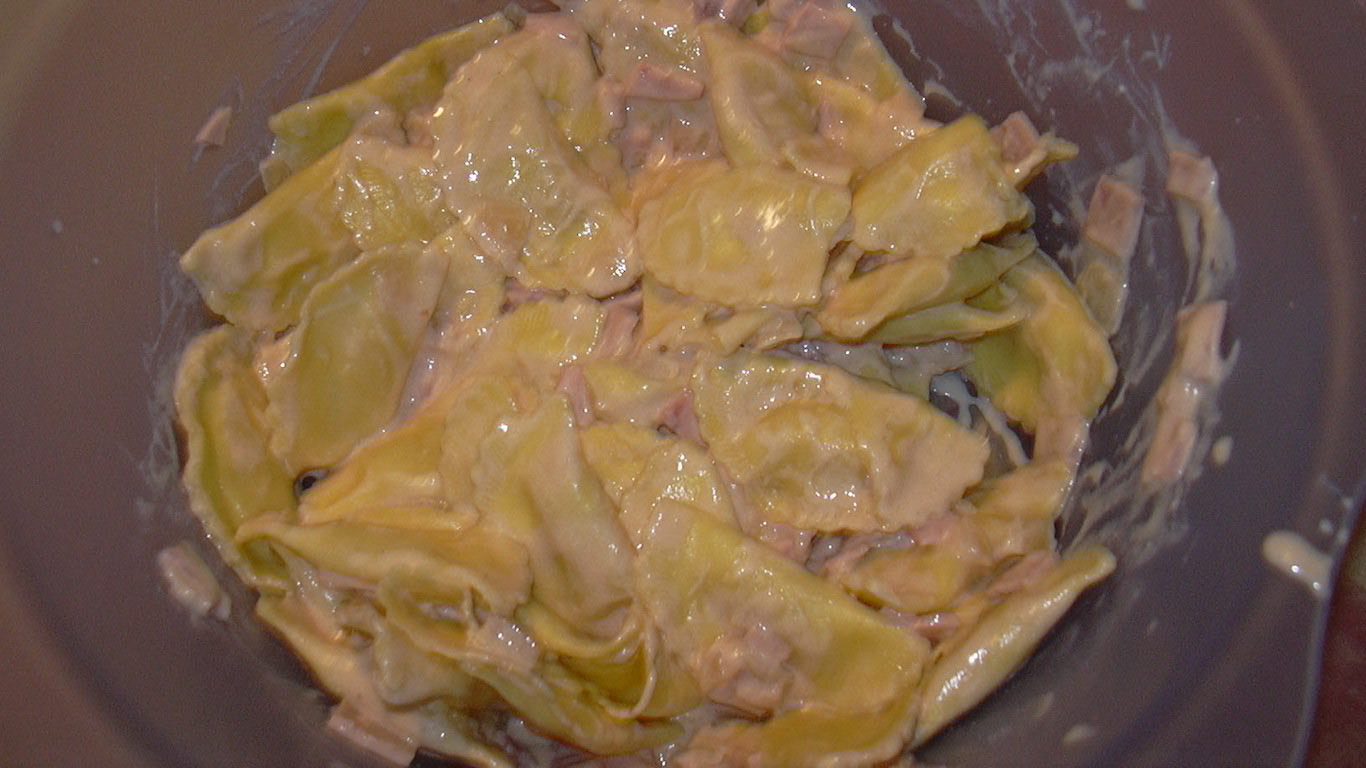
2. Caruso sauce
Spaghetti, tortellini, cappelletti, or some other pasta with Caruso sauce, named for the celebrated Neapolitan tenor Enrico Caruso, is sometimes seen on old-school Italian menus in the U.S., but is particularly popular in South America. And, well, it should be since it was invented in the 1950s at a restaurant called Mario e Alberto in Montevideo, Uruguay. Basically a white sauce full of sliced mushrooms, shredded cheese, chopped ham, and chopped walnuts, Caruso sauce remains unknown in Italy.
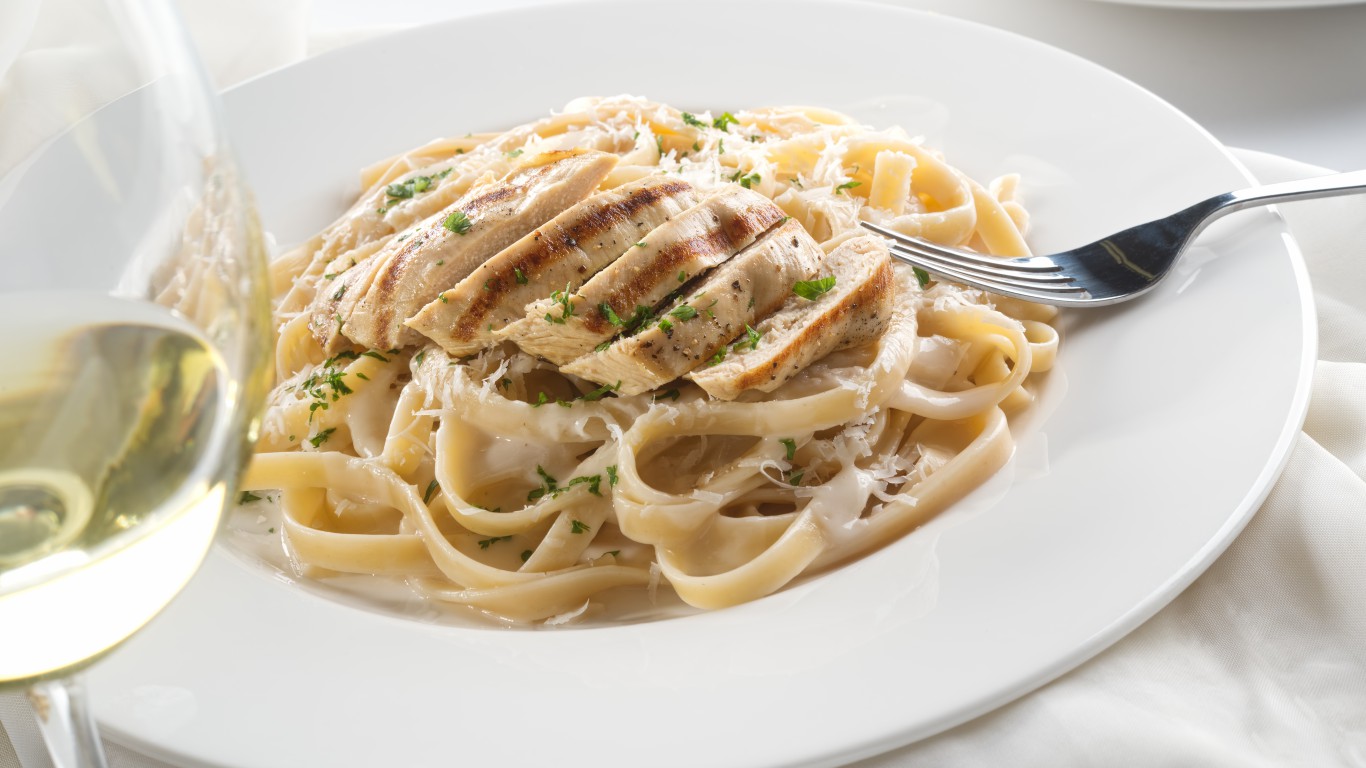
3. Chicken Alfredo
There really was an Alfredo — Alfredo di Lelio, a Roman restaurateur, who invented fettuccine Alfredo sometime in the late 1800s or early 1900s. His creation was simply pasta sauced with a large amount of very rich butter and plenty of grated parmigiano reggiano cheese — no cream, no garlic, no peas, nothing else at all except maybe a few grindings of salt and pepper.
Over the years, chefs in the U.S. and elsewhere started adding all those ingredients and more to the recipe, and the sauce took on a life of its own. The original fettuccine Alfredo is considered a retro dish in Italy today and is not much eaten outside tourist circles — and the idea of covering up a nice piece of chicken with a thick, creamy sauce wouldn’t make much sense to most Italians at all.
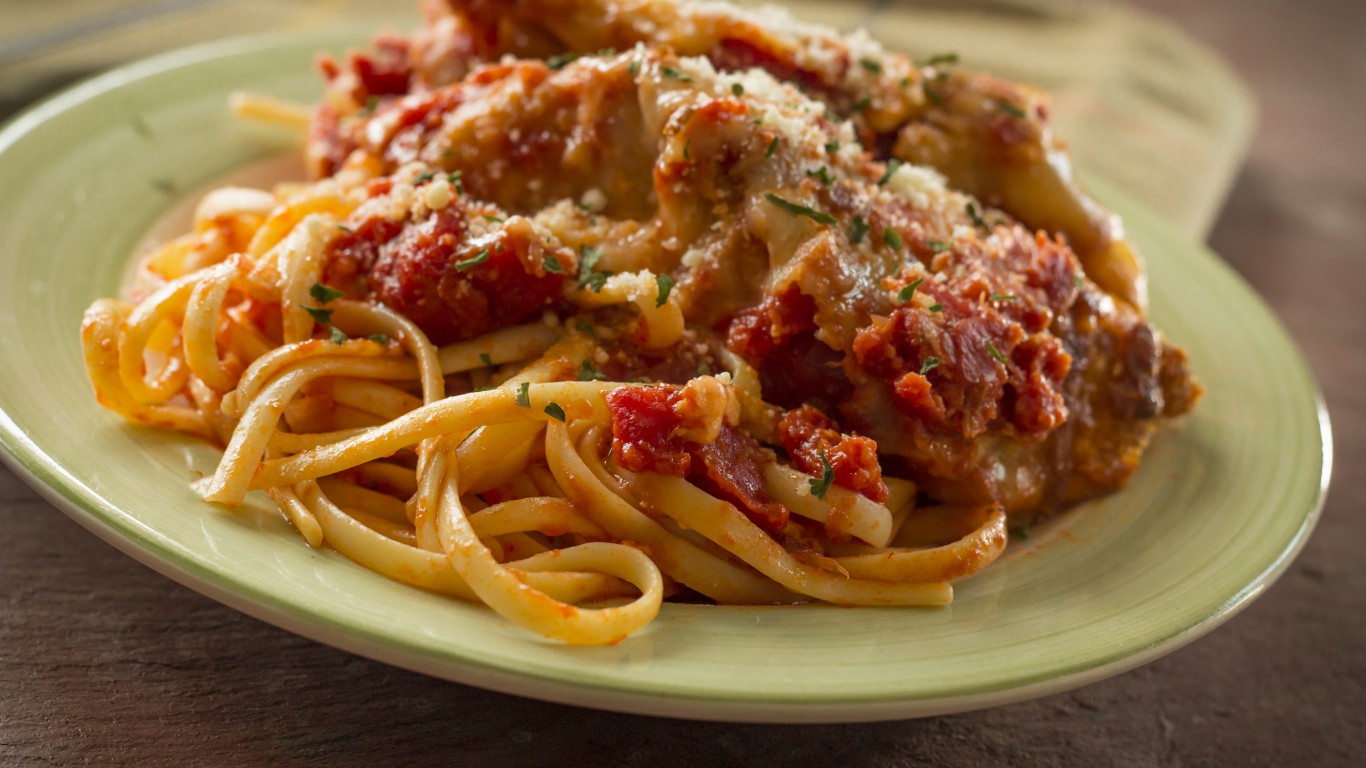
4. Chicken parm
Chicken parm (short for “parmigiana”) is another Italian-American staple you won’t find in Italy. Consisting of breaded chicken cutlets covered in tomato sauce with mozzarella or some other cheese melted over it, it is probably a hybrid of melanzane alla parmigiana, which means breaded eggplant slices under melted cheese, and vitello alla parmigiana, meaning breaded veal cutlet, usually without the cheese.
On a plate by itself, or on top of a mound of pasta, or in a sandwich, chicken parm is an Italian restaurant and deli basic, especially on the East Coast. In Italy? Not so much.
[in-text-ad-2]

5. Chicken scarpariello
Very few real Italian dishes obscure the basic protein — whether veal, chicken, seafood, or anything else — under a hearty sauce crowded with ingredients. Chicken scarpariello, meaning “shoemaker’s chicken,” is a classic example of how Italian-American cooks do exactly that. In this popular presentation, chicken pieces are pan-fried, then baked with Italian sausage, onions, garlic, bell peppers, potatoes, and sometimes hot chiles. It’s as delicious as it is non-Italian.

6. Cioppino
Ligurian fishermen make a dish called ciuppin, but that’s a puréed fish soup. The exuberant tomato-based stew called cioppino (CHOP-eeno), full of crab, shrimp, mussels, assorted fish, and other seafood, first appeared in the late 19th century around Fisherman’s Wharf in San Francisco. The area is settled by immigrants from Genoa and vicinity, but the stew has not made the journey back to Liguria.
[in-text-ad]

7. Clams casino
Though this dish — clams on the half-shell gratinéed with breadcrumbs mixture consisting of chopped bacon, garlic, and other ingredients — is popular in Italian restaurants all over America — but you’d be hard-pressed to find it in Italy itself. It seems to have been invented in Rhode Island, perhaps at a place called The Little Casino in Narragansett.
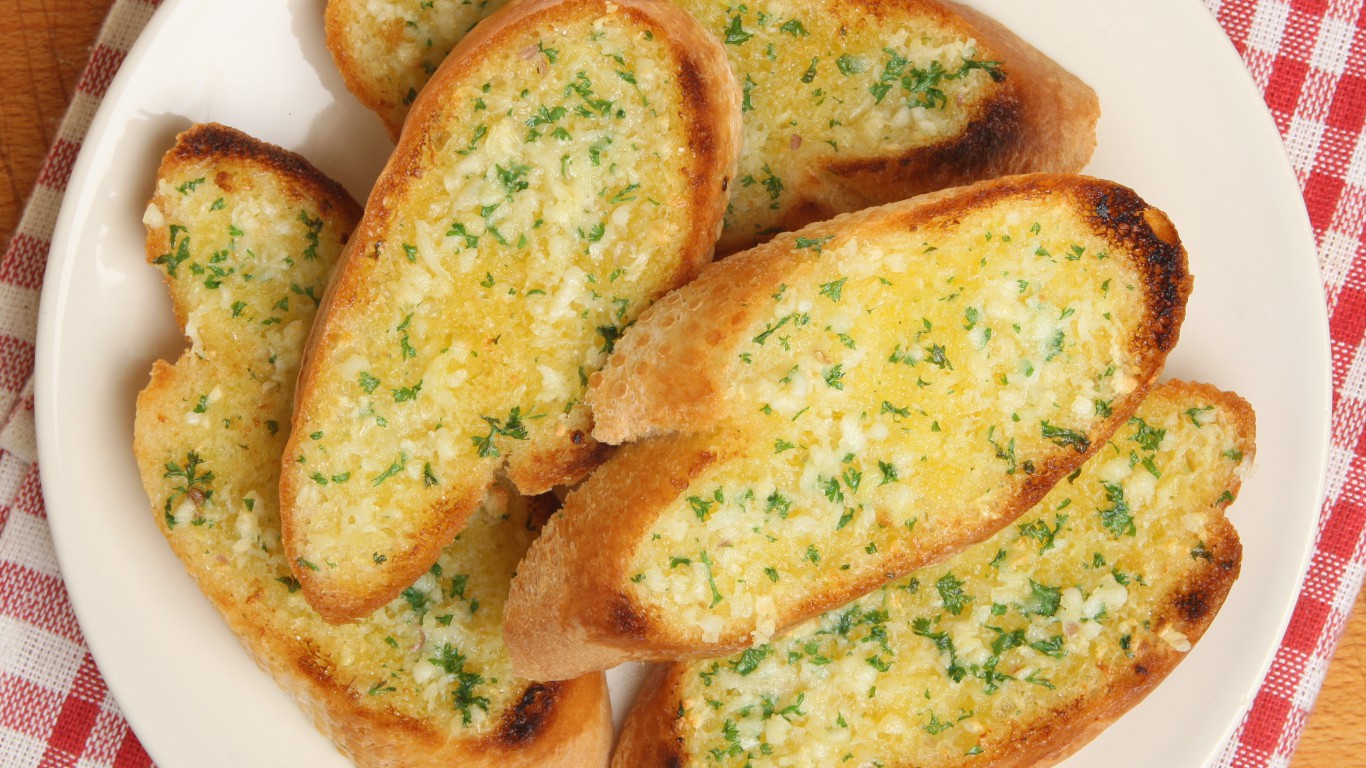
8. Garlic bread
It Italy, garlic bread is called bruschetta — that’s “broo-SKET-ta” — or fettunta, and it’s nothing more than grilled country bread rubbed with a peeled raw garlic clove and drizzled with olive oil. Few Italians would recognize the well-buttered, garlicky (or garlic-powdery) baguette, sometimes with cheese added, that we know as garlic bread.
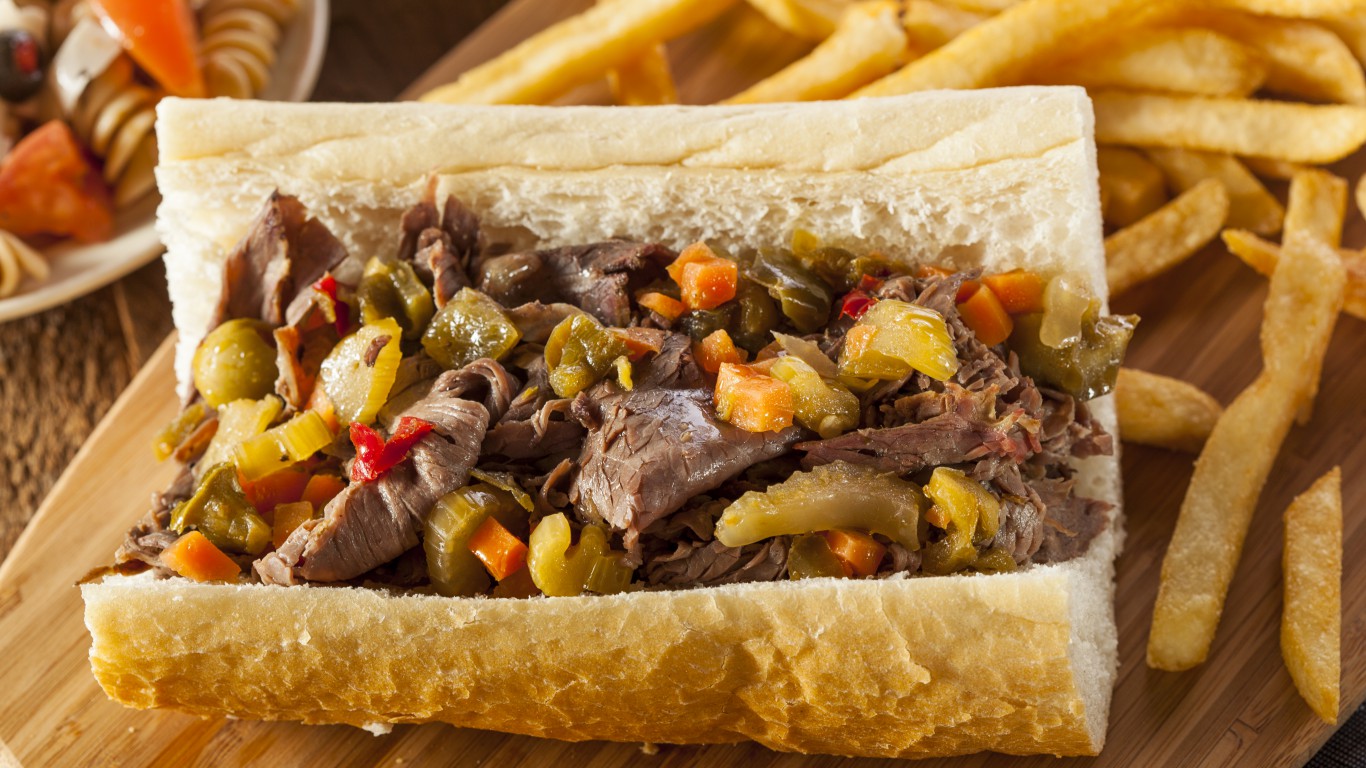
9. Italian beef sandwich
Few dishes could be less Italian in composition — or in spirit — than a pile of simmered and roasted thin-sliced beef heaped on a broth-moistened, long, soft roll and topped with pickled vegetables. Not surprisingly, then, this delicious sandwich originated right here, in Chicago, in the 1930s if not earlier.
[in-text-ad-2]

10. Italian dressing
It’s common in Italy’s trattorias to see a server pouring olive oil and vinegar freely into a big bowl of assorted greens, sprinkling in enough salt to give your cardiologist a seizure, then tossing it with crazed abandon — to delicious effect. The French prefer to combine the ingredients for salad dressing ahead of time, often into a classic vinaigrette, but that’s rare in Italy.
Italian dressing — typically made with vegetable oil, vinegar, some kind of sweetener, and assorted herbs and spices — is more French than Italian in that sense, though it was invented in America, probably at a restaurant in Massachusetts in the 1940s.
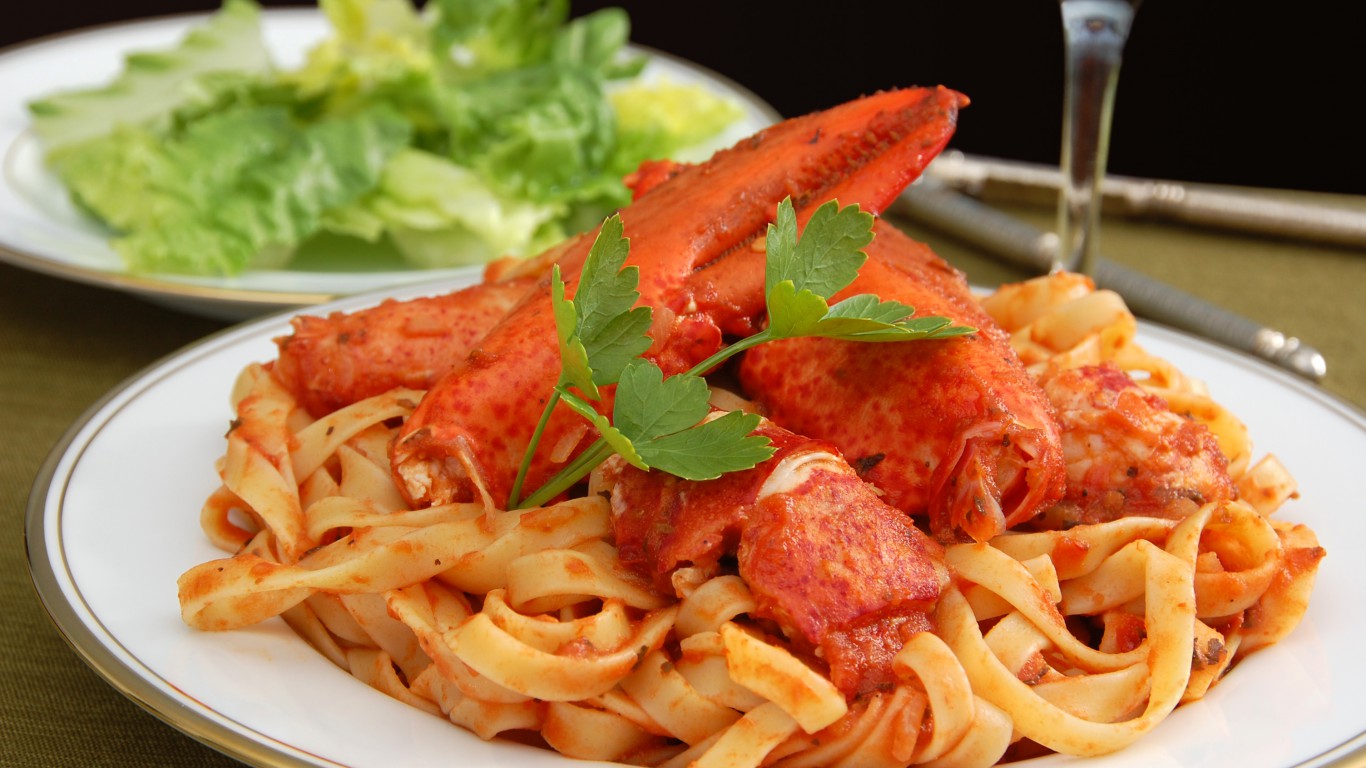
11. Lobster Fra Diavolo
To Italians, Fra Diavolo — literally “Brother Devil” — was an historical character, a soldier whose real name was Michele Pezza, and who fought the French in the early 19th century. To Italian-Americans and fans of Italian-American cuisine, on the other hand, it’s lobster in a spicy tomato sauce served over spaghetti.
We know it’s not really Italian because (a) it’s made with a kind of lobster found only in the Atlantic, not the Mediterranean; and (b) Italians don’t eat pasta with, or as, a main course. It probably dates from the 1920s or ’30s and seems to come from Long Island or elsewhere in the New York area.
[in-text-ad]

12. Muffuletta
In Sicily, muffuletta is a round, flattish bread loaf generously coated with sesame seeds. In the early years of the 20th century, a Sicilian immigrant to New Orleans named Salvatore Lupo opened his, still thriving, Central Grocery there and decided to use his version of the bread to make sandwiches of heroic proportion.
Though there are variations, including some made with seafood, the classic muffuletta is layered with olive salad (chopped olives with pickled carrots, celery, and cauliflower and plenty of garlic) and several kinds of cheese and Italian deli meats. The finished product, still found primarily in New Orleans, is so big that it’s often sold in half or quarter portions.
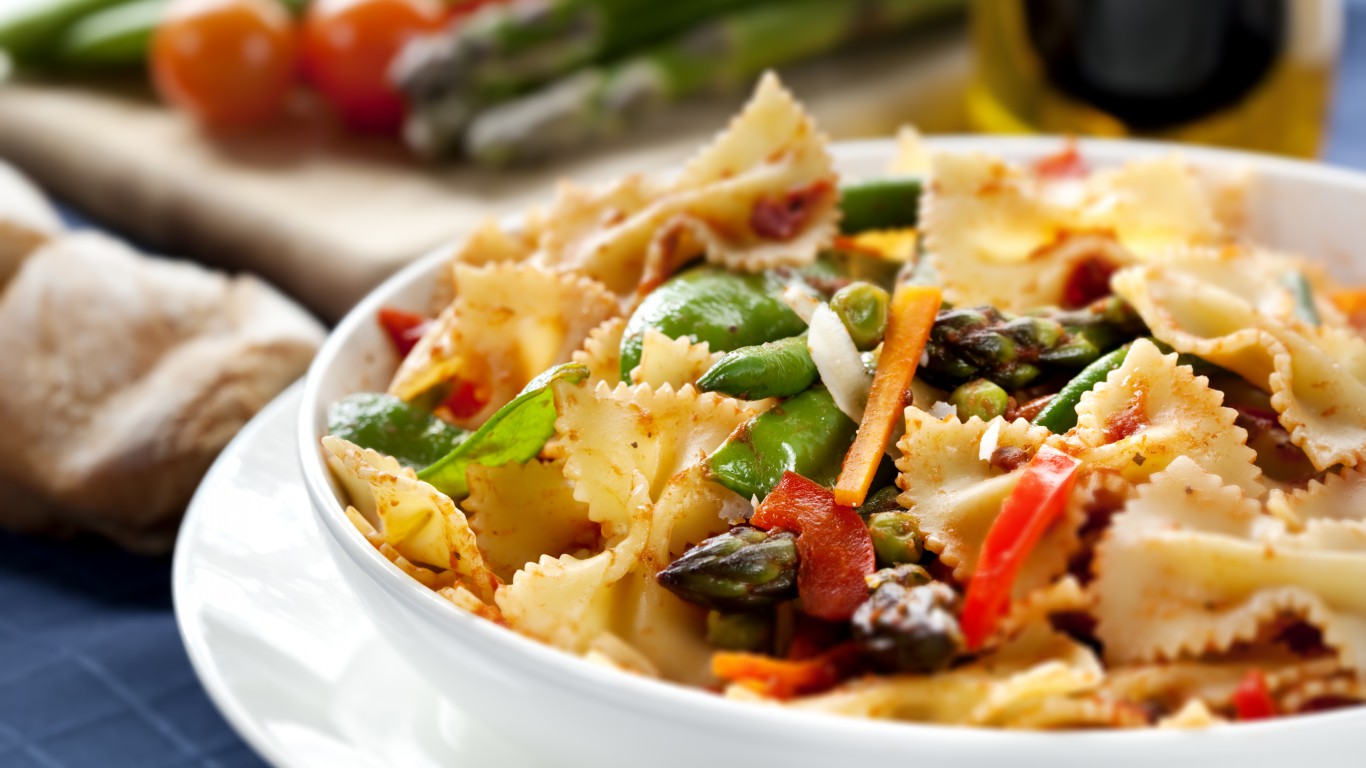
13. Pasta primavera
Pasta with various kinds of vegetables is served all over Italy, noodles loaded with an abundance and variety of different ones isn’t. This dish was actually invented in Canada, by Italian-born New York restaurateur Sirio Maccioni, who first cooked it up at a friend’s vacation home in Nova Scotia. Maccioni brought the idea back to his famed Manhattan restaurant, Le Cirque, and from there, versions of it —typically including peas, asparagus, zucchini, carrots, bell peppers, and whatever else is in season, tossed with butter, cream, and parmigiano reggiano cheese — it spread around the country to become one of the most famous “Italian” specialties of the 1970s.

14. Pepperoni
Many an American tourist ordering a “pepperoni pizza” in Italy has been surprised to be served a pizza topped not with little discs of finely textured, well-seasoned salami but with strips of roasted or sautéed bell peppers. Pepperoni isn’t an Italian word; peperone is, but it means peppers. Though similar to several types of salami from southern Italy, pepperoni was invented in America.
[in-text-ad-2]
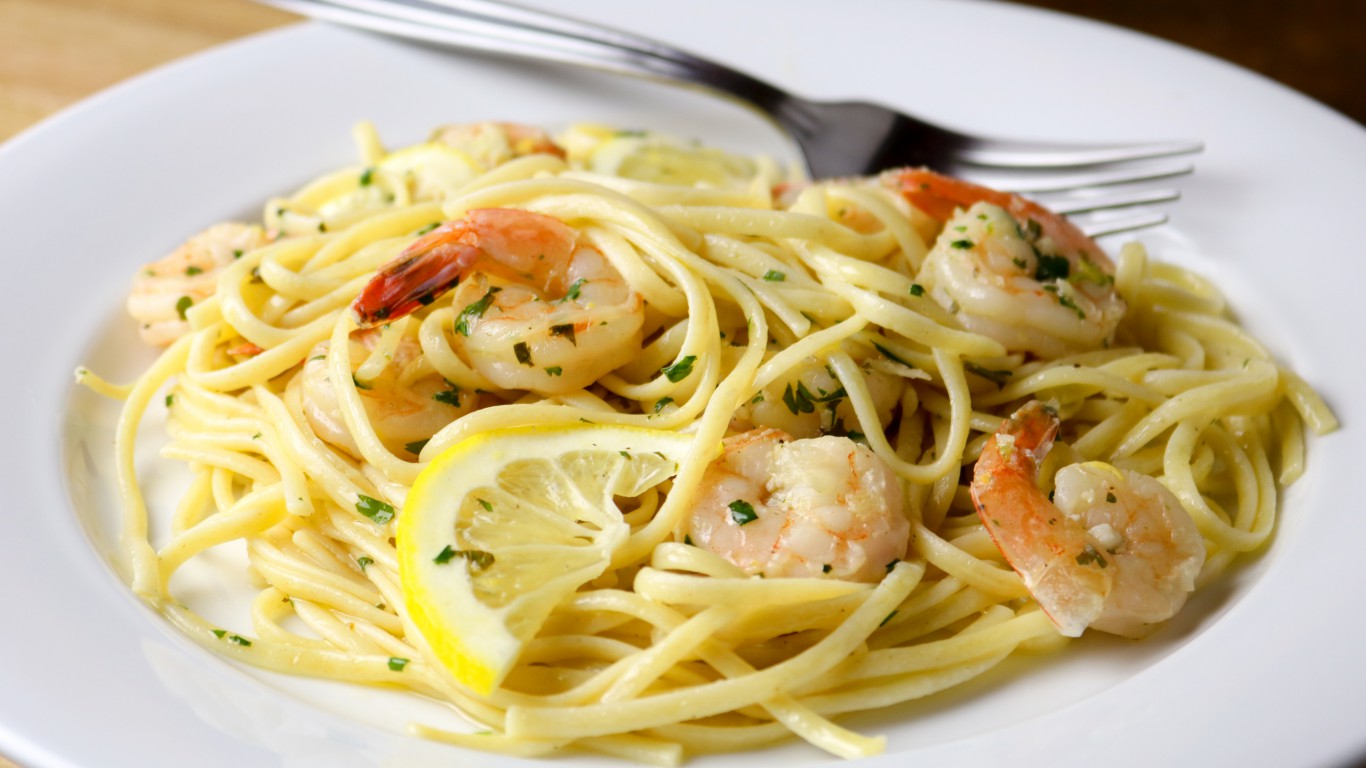
15. Shrimp scampi
The very name of this popular dish should be a giveaway: Shrimp and scampi are two different things. We all know what shrimp are; scampi, also called Dublin Bay prawns, are actually tiny lobsters, with pincer-like claws and sweet, tasty meat. One preparation for scampi in Italy is to poach them quickly in white wine, then toss them in a sauce of butter or oil and garlic.
Italians immigrating to the United States couldn’t find scampi, so they applied a similar treatment to shrimp. The dish should probably be called “shrimp alla scampi” or “scampi style. It’s safe to say, in any case, that if you ask for “shrimp scampi” in Italy, nobody will know what you’re talking about.

16. Spaghetti with meatballs
Italians eat meatballs, which they call polpette, by themselves, simply fried or draped in a savory sauce, usually tomato-based. Though different kinds of meat, ground or otherwise, are added to pasta in Italy, the idea of putting big spheres of it on a plate of thin noodles would probably never have occurred to anybody on that side of the Atlantic. The usual theory is that Italian immigrants in the early 20th century were suddenly able to afford meat on a daily basis, so they added it wherever they could.
[in-text-ad]

17. Spaghetti bolognese
Bolognese sauce — from Bologna, the capital of Italy’s gastronomically rich Emilia-Romagna region — also called ragù, is a classic preparation of ground beef or veal with tomatoes (usually), garlic, wine, and sometimes other ingredients. In Italy, it is served mostly with tagliatelle, fettuccine, or other flat pasta. Few Italians would dream of using it with spaghetti, which would be considered too thin to properly hold the sauce. That aside, “spag bol,” as the British call it, is popular with just about everyone else.

18. Steak Sinatra
This preparation of pan-seared New York strip steak cloaked in a wine sauce with bell peppers and mushrooms was one of Frank Sinatra’s favorite dishes. It was reportedly invented for the singer at Patsy D’Amore’s Villa Capri, a popular celebrity hangout in Hollywood, in the 1950s. Sinatra’s fame spread worldwide, but his steak did not.

19. Stuffed shells
Baked, stuffed pasta, such as manicotti, is common in southern Italy, but the big seashell-shaped pasta variety called conchiglie, or simply “shells” in America, is more likely to be tossed with a dense sauce than laboriously stuffed. It is especially unlikely that anyone in Italy would fill it, as some American cooks do, with chopped-up chicken parm (see above) or Philly cheesesteak, much less, to quote one internet recipe, “butternut squash Alfredo.”
[in-text-ad-2]
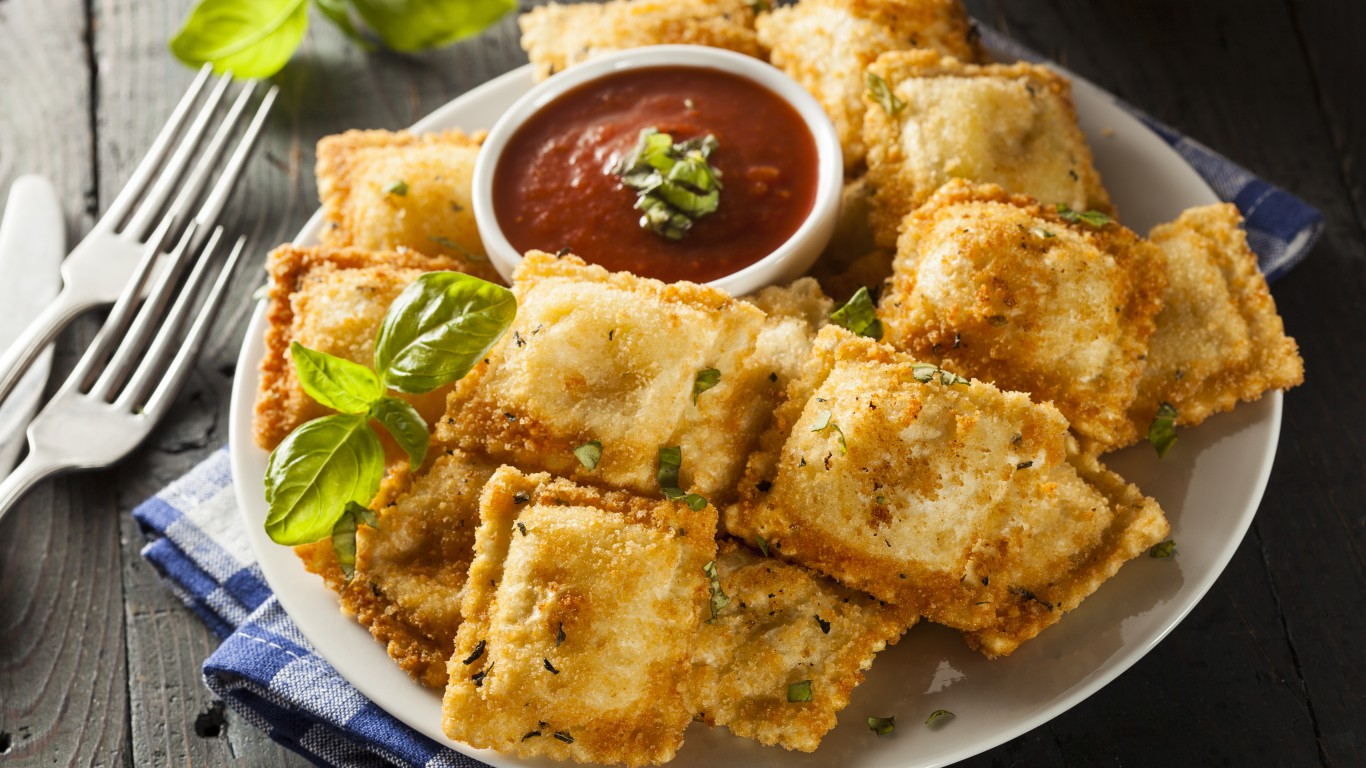
20. Toasted ravioli
The name is a misnomer, because these delicious little packets of ground meat are not toasted, but breaded and deep-fried. Fried ravioli-shaped pastries, typically filled with ricotta or fruit preserves, are eaten in Sicily, but savory ravioli in this form apparently originated in the 1940s in the St. Louis Italian neighborhood known as The Hill. Toasted ravioli are usually dusted with finely grated parmesan cheese and inevitably served with marinara sauce for dipping.
Want retirement to come a few years earlier than you’d planned? Or are you ready to retire now, but want an extra set of eyes on your finances?
Now you can speak with up to 3 financial experts in your area for FREE. By simply clicking here you can begin to match with financial professionals who can help you build your plan to retire early. And the best part? The first conversation with them is free.
Click here to match with up to 3 financial pros who would be excited to help you make financial decisions.
Thank you for reading! Have some feedback for us?
Contact the 24/7 Wall St. editorial team.